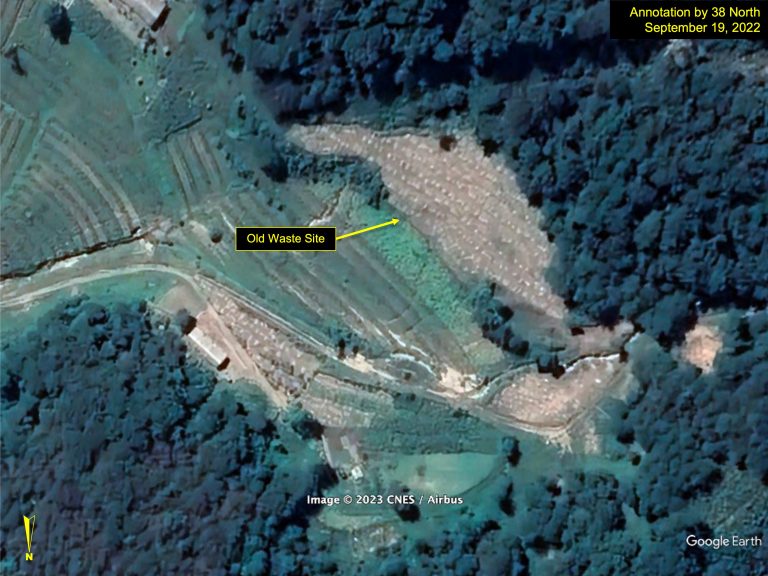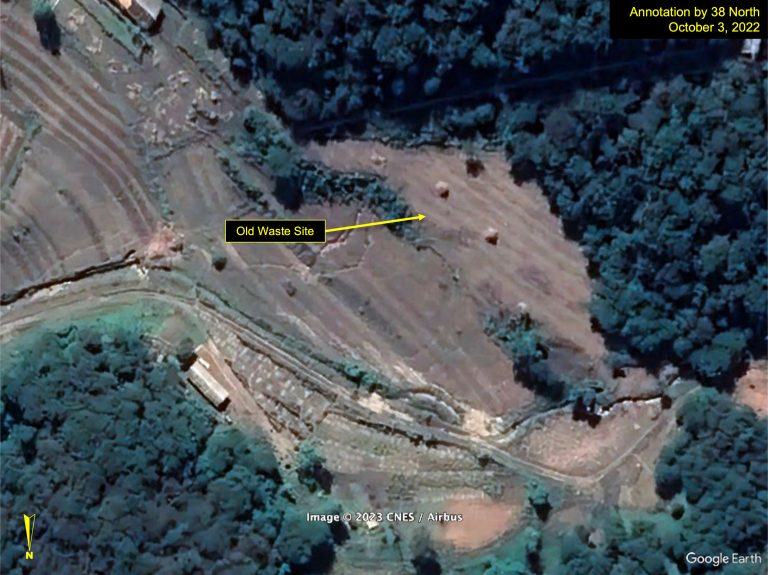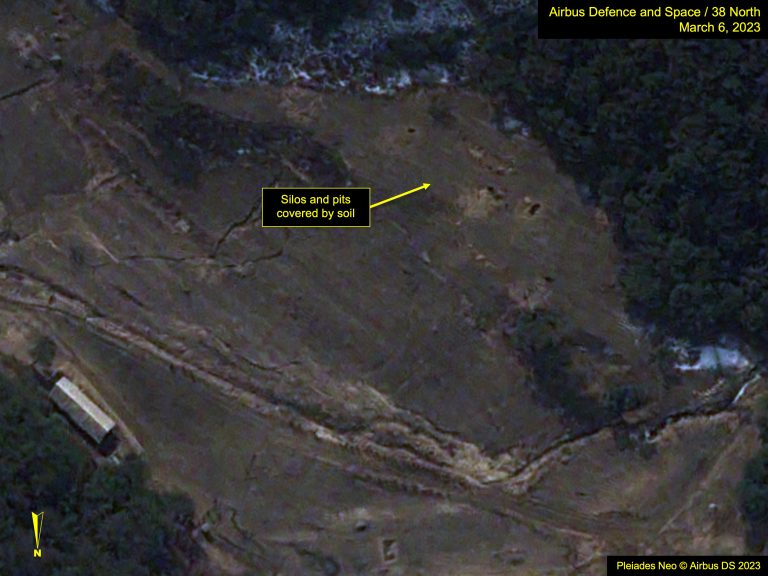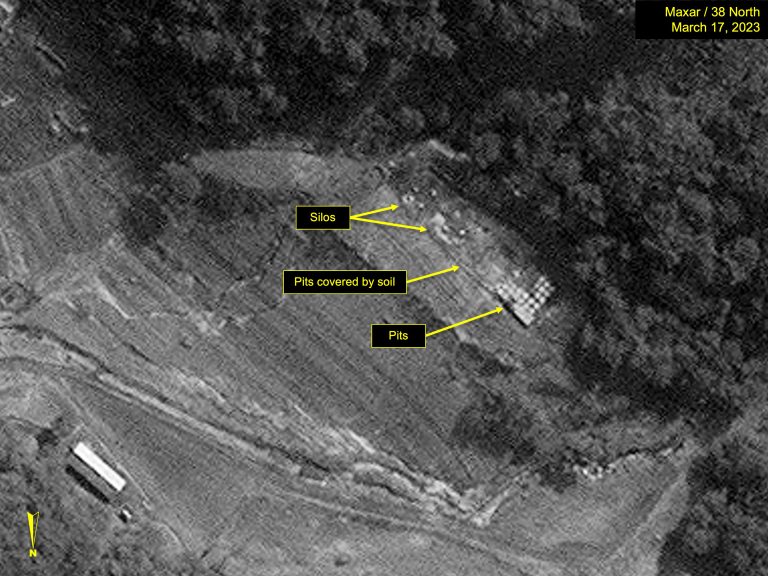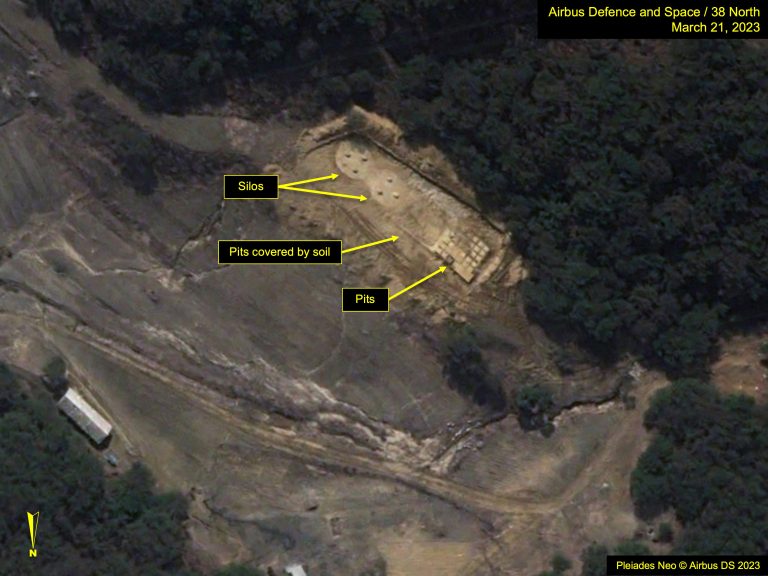Satellite Imagery Reveals New Activity at the Old Waste Site at Yongbyon
Recent commercial satellite imagery of North Korea’s Yongbyon Nuclear Scientific Research Center indicates new activities have started at the center’s “Old Waste Site.” The original waste facility, similar in design to radioactive waste facilities in other countries, was buried and never inspected, despite International Atomic Energy Agency (IAEA) requests to do so in 1992. Since then, there has been no major activity in this area, only occasional agricultural use, until earlier this month. While it is too early to confirm what is happening at this site, demolishing the Old Waste Site or building something over it will make verification efforts of past activities more difficult in the future.
Background
Following the entry into force of an IAEA Safeguards Agreement, the DPRK submitted in 1992 its initial declaration on nuclear material and facilities. Subsequent inspections by the IAEA revealed inconsistencies between the information North Korea provided and IAEA verification findings related to plutonium separation activities.
Since Pyongyang was unable to explain those noted inconsistencies, the IAEA requested special inspections at two sites in Yongbyon: a building next to the Radiochemical Laboratory called Building 500 and a nuclear waste site known simply as the “Old Waste Site.” Inspections of these two facilities could provide important information on past nuclear activities.
North Korea did not provide access to either site, and as such, the IAEA Board of Governors adopted in April 1993 a resolution finding the DPRK in noncompliance with its Safeguards Agreement, and the matter was reported to the United Nations Security Council.
The Old Waste Site was similar in design to waste sites that the Soviet Union had assisted its clients of IRT reactors to build to store radioactive waste. North Korea had covered this site and the access road to it with soil and claimed that it was not a nuclear site. However, the IAEA obtained satellite imagery before the concealment activities, which showed the site structure was similar to other radioactive waste storage facilities.
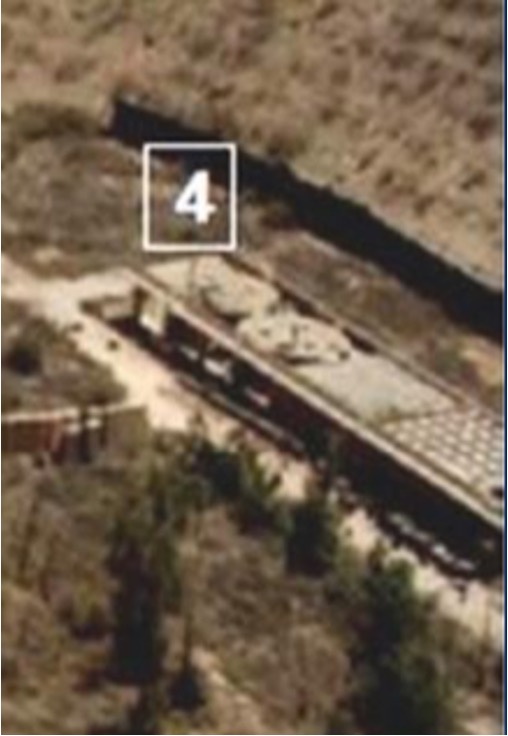
Recent Activity at the Old Waste Site
Since 1992, no major activity has been seen at the Old Waste Site, although it has been occasionally used for agricultural purposes.[1]
However, recent imagery shows that sometime between March 6 and 17, new activities have started that are gradually revealing construction similar in design to radioactive waste storage facilities in Tuwaitha, Iraq. By March 21, the foundation shape is clearer.
It is too early to conclude the exact purpose of these ongoing activities, although it appears the Old Waste Site buried in 1992 is slowly being uncovered. If this is the case, the intention may be to demolish the facility, a valuable source of information about North Korea’s past plutonium production efforts, such as the presence of undeclared plutonium and activities related to plutonium metallurgy. Alternatively, this may be the beginning stages of building a new structure on this site, burying the Old Waste Site for good. In either situation, it will make verification efforts in the future more difficult should IAEA inspectors ever be granted access again.
- [1]
One exception was in imagery from May 15, 2013; minor excavation activity was observed. The purpose of which is unknown.

